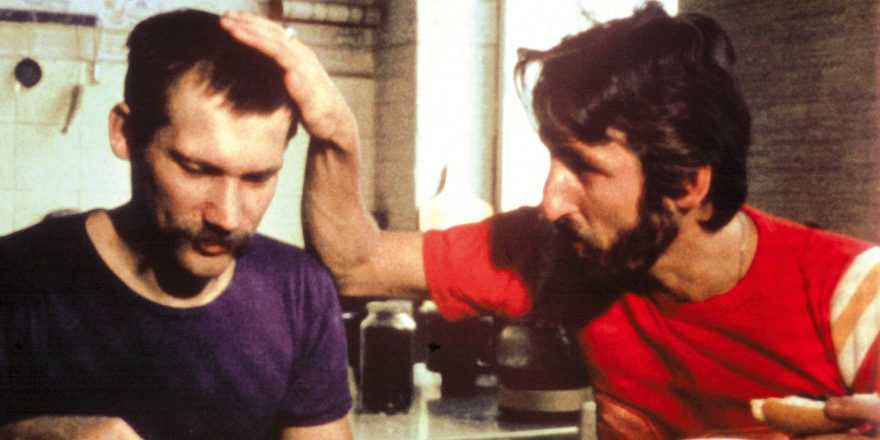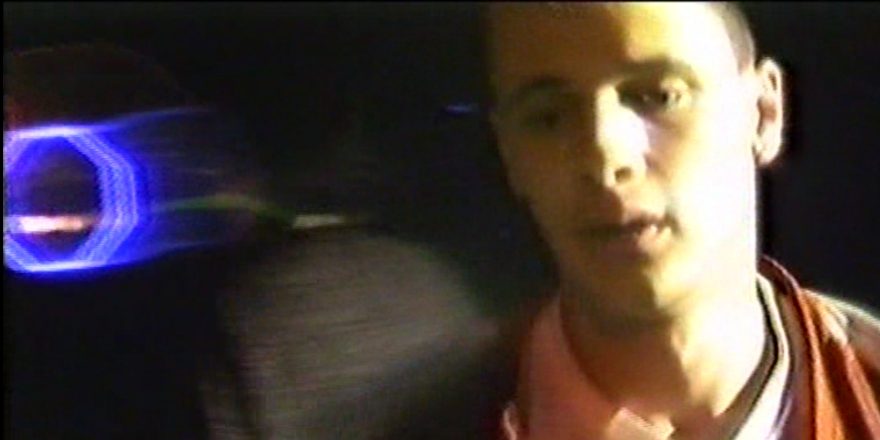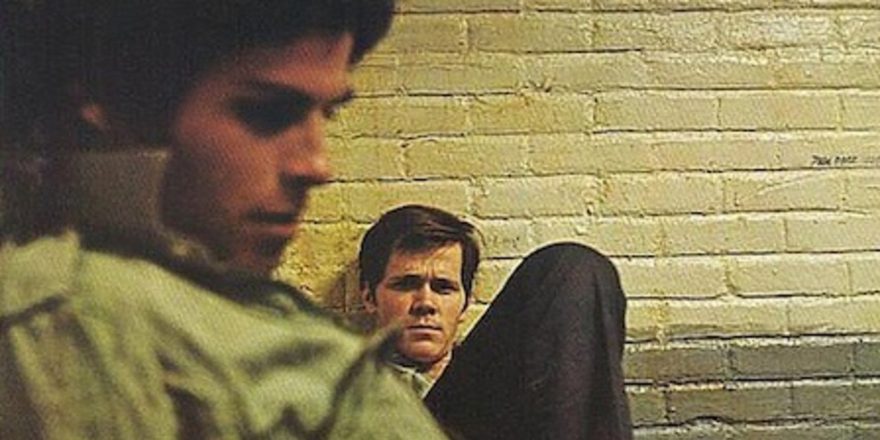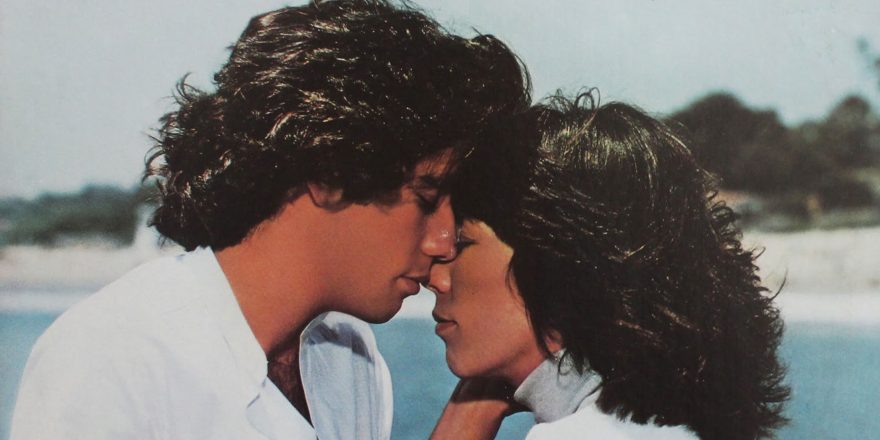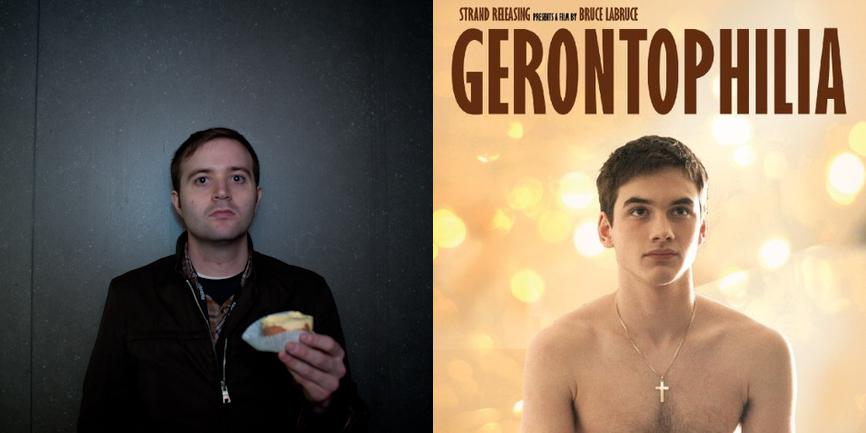Beware: Spoilers ahead
It would not be an exaggeration to say that Frank Ripploh’s legendary Taxi Zum Klo (Taxi to the Toilet), made in 1980 on a shoestring budget (DM 100,000 at the time – roughly $60,000 US), is one of the best gay movies ever made. Original, cinematic, personal and emotionally affecting, the film offers not only unique access to the gay zeitgeist of the time, genital warts and all, but also a kind of manifesto for early gay liberationists, the expression of a sexual militancy that challenged and disrupted the very conventions of mainstream society. The magnum opus of Ripploh, who was mentored by gay cinema legend Rosa von Praunheim, Taxi Zum Klo is clearly autobiographical, chock-full of personal touches and details. It is also guided by a distinct voice, often communicated through voiceover narration, that creates a strong identification with the main character, Peggy (played by the director himself), despite his outrageous lifestyle, his sexual audacity, and his often unsympathetic behavior. It’s remarkable that a movie depicting homosexuality with such unvarnished veracity became a modest hit in West Germany and worldwide, attracting a straight audience eager to discover the secrets of gay life.
Taxi Zum Klo begins as the camera pans across a wall covered with a stunning array of highly codified gay images, expressing a camp sensibility, sexual fetish and political sentiments (“Gays for Socialism!”). The accompanying voiceover immediately establishes the arch tone of the film: “Otherwise,” says Peggy, “I’m your normal, tired, neurotic, polymorphously perverse teacher.” Ripploh plays both an elementary school teacher (the director’s occupation in real life) and an amateur filmmaker, so the movie can be read, in a sense, as the film he is making about his life in his spare time. An alarm goes off as Peggy gets out of bed, unashamedly showing his hairy ass in the process, a glimpse of the explicitness to come. While retrieving the morning paper, he inadvertently locks himself, naked, out of his apartment, and has to knock on his female neighbor’s door in order to get back in by precariously climbing over their balconies, exposing his naked ass to the public. It’s a neat introduction, establishing Peggy as aggressive, exhibitionistic, spontaneous and reckless.
In the following scene, Peggy, explaining his tardiness, acts out the previous incident in pantomime in front of his class and asks his students to describe what had just happened to him. Like the Diane Keaton character in Looking for Mr. Goodbar, made a few years earlier, the tension of the film lies between a schoolteacher’s honest and altruistic daytime profession, guided by the reality principle, and his hedonistic, sexually voracious nighttime activities, guided by the pleasure principle. In both cases, the latter will eventually impose itself upon the former, making it impossible to achieve a balance between the two. But the scenes of Peggy with his students are charming and endearing, making it clear that he has a genuine emotional investment in his occupation. The humanization of this character, despite all of his sexual extremes and fetishes, without succumbing to any kind of sentimentality, is at the heart of the film.
The subsequent scene, set in a men’s public toilet, captures the insanity of Peggy’s life in a nutsack, so to speak. (Insane, that is, to a straight audience, but not so much to the average gay man of the time, many who lived their lives as if they were in a perpetual porn movie.) Peggy enters the “cottage” to find four men peeing side by side at the urinals, each checking out the other’s dick. In his polymorphously perverse world, all men are sexual beings at all times, and thereby fair game for cruising. (Friedkin’s Cruising, which came out the same year, depicts a similar gay world of perpetual sexual excitation.) Peggy heads for a cubicle, where he sits on the toilet to do some schoolwork. He peeps through the glory hole to see another man performing for him, spreading his cheeks. A quick cut to a woman in a peep show helpfully makes the connection for the straight audience. (These clever cut-ins, more consistent with experimental film technique, punctuate the film.) The next man in the adjacent cubicle pushes his penis through the glory hole, not leaving anything to the audience’s imagination. It’s an unimaginably frank depiction of the tearoom sex of the time, managing to be both funny and sexy.
The film continues on with complete self-assurance, never hitting a false note. Not one to allow his political sympathies to interfere with his sexual preoccupations, while driving in his car Peggy’s voiceover intones, “This damn Chilean solidarity meeting. I’m not going. No way. I’d rather go to the baths!” A scene of Peggy bowling with his school colleagues is intercut with quick shots of him putting on a cock ring (Taxi Zum Klo sometimes almost reads as an instructional film), and their singing of “Happy Birthday” is intercut with vintage porn footage of a straight-sex orgy. A scene of Peggy getting an erotic massage at a gay sauna is accompanied by his voiceover wondering what he should get his mother for his birthday, the Freudian implications allowed to play out freely and without judgment.
After Peggy’s character is indelibly established, the second main protagonist of the film is introduced – Bernd, whom Peggy picks up at Bernd’s workplace, a gay porn theater. The two men are almost clones of one another, having the style of the “clone” of the era, sporting mustaches and sideburns and having a strong tendency toward leather. A series of naturalist scenes establishes their budding intimacy, sexual and otherwise, with extraordinary frankness, showing them naked together in the bathtub, shampooing each other’s hair, sucking each other’s toes, and eating breakfast together in comfortable silence. But Peggy soon makes it clear that he’s not interested in any sort of conventional relationship when he picks up another clone at the new-fangled bank machine and takes him home for a very explicit 69 cocksucking scene, also complemented by a round of toe-sucking. Bernd spies on them forlornly at the glass door, prefiguring the central fissure in their relationship, between monogamy and domesticity on the one side, and complete sexual abandon and anti-family values on the other.
I can’t tell you how much I identify personally with Peggy’s character, even though back in the ’80s I was quite critical of clones, who seemed to evince their own sort of hierarchy and conformity. Now, looking back, they seem inordinately glamorous to me, with their sexually militant uniforms, their hedonistic abandon, and their utter contempt for the proprieties of polite society. I totally relate to Peggy’s voiceover as he drives his car, enumerating a variety of worries common to gay men: How can anyone possibly sustain sexual excitement in a monogamous relationship? Will I be able to afford hustlers on a pension to avoid becoming an old man hanging around public urinals? Do I have any number of venereal diseases? Peggy’s very close-up and personal rectal exam that follows reinforces the utter vulnerability of his character.
Consistent with the barrage of gay signifiers with which the film assaults the poor straight audience, two mind-blowing scenes push the film to hitherto untold taboo areas. In the first, Peggy receives a visit from his best friend, Wally, a drag queen in a houndstooth overcoat, black dress and pearls, who complains about foreigners and flirts with Bernd while Peggy tutors one of his young students in the kitchen. Bernd proceeds to show Wally one of Peggy’s films, Christian and the Stamp-Collector, a real documentary made for the West German public school system to warn students about pedophiles. Meanwhile, in the kitchen, the young student starts to flirt with Peggy in his own unconscious way, sitting on his lap. It’s an audacious scene, pointing to the misconceptions about lecherous homosexuals in a playful, completely politically incorrect way. The second scene shows Bernd wearing a Vivienne Westwood “Cowboys” T-shirt, casually leafing through a Tom of Finland book while watching a news report about neo-Nazis on TV! Like Panasonic, just slightly ahead of its time.
After taking acid and continuing his unceasing crusade of casual sex, Peggy ends up in the hospital for six weeks with an undisclosed illness, the scene unavoidably foreshadowing the looming AIDS crisis to come. Bernd visits to talk some sense into him, but Peggy is still adamantly against his lover’s attempts to domesticate him. When Bernd leaves in disgust, Peggy takes a taxi to the nearest public toilet for an afternoon delight. Its doors locked, he directs the taxi driver to take him to the phallic Siegessäule, the Berlin Victory Column, in his pursuit of pleasure. He ends up making out with a leather clone, who rejects him when he discovers he’s wearing a hospital gown under his jeans. Only gay men of the liberation could possibly understand this relentless, sometimes self-destructive, sexual drive.
The film ends with Peggy and Bernd attending a fancy drag ball, Peggy resplendent in pink chiffon drag, Bernd cute as a button in a sailor’s uniform. As Peggy shamelessly flirts and makes out with a young stable boy (yet another leather clone), Bernd looks on sadly, the perpetual victim. Peggy follows him onto the U-Bahn, reproaching him yet again for his conventional, conformist behavior. Peggy exits the train in anger, and after an encounter with a female prostitute, who rolls dice with him to determine whether or not he will go home with her and do coke or go to his class, he ends up doing the latter. He finally confronts his students with his real self in its totality – the bearded drag queen, not very fresh from a night of debauchery – as the pleasure principle finally asserts its dominance. He has his students each roll the dice to determine which of six things they would like to do to go against the rules and regulations of school and society, allowing the children their own moment of catharsis. Meanwhile, Bernd wanders alone in the snow in his sailor suit, ending up hugging a lamb in the middle of a stampeding herd of sheep, which is intercut with Peggy’s students anarchically trashing their classroom. It’s a brilliant montage to end the film, an exhilarating metaphor for the kind of rebellion the gay liberationists waged against staid society.
A written coda ends the film on a positive note, remarkable for such a subversive film that revels in its own dissolution: “Peggy and Bernd get back together. Peggy lost her job as a teacher and became a filmmaker full time.” Sadly, this didn’t exactly come to pass. After small parts in one film about Fassbinder (Kamikaze ’89) and one by him (Querelle), Ripploh would only direct two more movies of his own, one a sequel to Taxi Zum Klo, made in 1987, both unsuccessful. He died of cancer in 2002, age 53. Taxi Zum Klo was clearly his one true, pure expression of cinematic clarity, creating an essential document of the sensibility of the newly liberated gay male of the ’70s.



